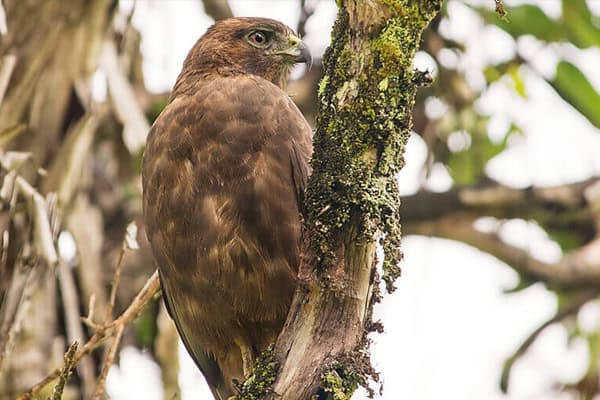11 Types of Woodpeckers in Arizona (With Pictures)
Did you know Arizona has 11 types of woodpeckers? This shows the state’s diverse habitats, from forests to deserts. Knowing about woodpeckers is key if you love birdwatching or just want to learn about Arizona’s wildlife.
This article will take you into the world of Arizona’s woodpeckers. You’ll meet species like the Downy Woodpecker and the rare Arizona Woodpecker. With pictures, you’ll learn and find places to see these birds in nature.
Introduction to Woodpeckers in Arizona
Woodpeckers in Arizona add to the area’s rich bird life. There are 11 different types, known for their bright colors and special pecking ways. They live in many places, from big deserts to green forests.
Species like the Gila Woodpecker, Ladder-backed Woodpecker, and Gilded Flicker are well-known. They eat different foods, like cactus fruits, mistletoe berries, and bugs. In cities, they even go to hummingbird feeders and eat dog food.
Woodpeckers in Arizona have amazing physical features. They have strong necks and heads to drill into bark. Their special bills help them find and catch insects.
Arizona’s varied landscapes, from pine woods to the Sonoran Desert, are perfect for woodpeckers. They make homes in saguaros or trees. This helps keep Arizona’s bird life strong.
Importance of Woodpeckers in Ecosystems
Woodpeckers play a big role in keeping ecosystems healthy. They dig holes in trees for homes, which helps many other animals. This boosts biodiversity in Arizona.
By eating insects, woodpeckers keep forests balanced. This stops insects from harming the trees.
The Gila Woodpecker and Saguaro Cactus have a special bond. Woodpeckers make homes in the cacti, protecting themselves. They also eat bugs that harm the cactus.
This shows how woodpeckers and their homes are connected. It’s a key part of nature’s balance.
Woodpeckers also help other birds by making new homes. Birds like elf owls and sparrows move in. This helps keep the area diverse and healthy.
Woodpecker Species Overview
In Arizona, you’ll find many woodpecker species. Each one is special and fits its home well. This guide helps you spot these birds by their unique features.
Woodpeckers in Arizona are 6½ to 14 inches long. Males often have a bright red spot at the back of their head. Females might not have this red but have a brown cheek patch. They live in pine-oak, oak, and sycamore-walnut woodlands. They make holes in dead trees to raise their young.
These birds have interesting nesting habits. Incubation lasts about 15 days. After that, the young birds fly out about 25-30 days later. They find food by spiraling around trees, looking for insects like termites and carpenter bees.
Here’s a table with more info on some Arizona woodpeckers:
| Woodpecker Species | Size (inches) | Male Characteristics | Female Characteristics | Nesting Habits |
|---|---|---|---|---|
| Northern Flicker | 12-14 | Bright red spot at crown | No red spot, brown cheeks | Nests in cavities in dead trees |
| Downy Woodpecker | 6½-7 | Small red patch on head | Red patch on males only | Nests in 3-10 feet off ground |
| Hairy Woodpecker | 9-11 | Large red spot on crown | Red patch on males only | Nests in pre-drilled holes in trees |
This guide shows you how to tell Arizona woodpeckers apart. It covers their looks, how they nest, and how they eat. Knowing these things will help you enjoy watching them in the wild.
Woodpeckers of Arizona
Arizona is home to many woodpecker species, making it great for birdwatching. You can see 15 different types of woodpeckers here. Some common ones are the Gila Woodpecker, Ladder-backed Woodpecker, and Gilded Flicker. Each has its own special features.
Overview of Common Species
The most common woodpeckers in Arizona are:
- Gila Woodpecker
- Ladder-backed Woodpecker
- Acorn Woodpecker
- Arizona Woodpecker
- Northern Flicker
Gila Woodpeckers are often seen in the south of Arizona, all year round. Ladder-backed Woodpeckers live at lower places. Acorn Woodpeckers are seen all year in places like Madera Canyon. They all help trees by eating insects.
Physical Characteristics of Each Species
Knowing what woodpeckers look like can make birdwatching better. Here are some key features:
| Species | Size | Coloration | Distinctive Markings |
|---|---|---|---|
| Gila Woodpecker | 9-10 inches | Brown with white spots | Black crown and red nape |
| Ladder-backed Woodpecker | 7.5-9 inches | Black-and-white striped | Bold black “ladder” pattern on back |
| Acorn Woodpecker | 8-9 inches | Black, white, and red | Unique facial coloration and acorn storage behavior |
| Northern Flicker | 11-12 inches | Tawny brown with black and white | Spotted belly and distinctive wings |
Knowing how to spot woodpeckers by their size and markings is helpful. Watching their behavior in different seasons makes birdwatching in Arizona even more fun.
Specific Woodpecker Species in Arizona
In Arizona, you can find several distinct woodpecker species. Each one has unique behaviors and characteristics. This makes Arizona’s woodpeckers very interesting.
1. Downy Woodpecker
The Downy Woodpecker is small, about 6 to 7 inches long. It lives in North America, including Arizona. You can find it in lower to mid-elevation oaks and oak-pine woodlands.
This bird has a black-and-white striped head and a short bill. It lives for 2 to 5 years. Both males and females help make nests by chiseling out soft wood.

Downy Woodpeckers like to look for insects under bark and flake off bark to reach the insects below.
2. Hairy Woodpecker
The Hairy Woodpecker is similar to the Downy but bigger. It’s about 9 to 10 inches tall. You can find them in mature forests, backyards, parks, and orchards.

Hairy woodpeckers eat insects, fruits, nuts, and acorns. They help keep trees healthy by controlling pests.
3. Northern Flicker
Northern Flickers are interesting birds. They are about 12 to 14 inches long. They are one of the larger woodpeckers.

Furthermore, they forage on the ground for ants and beetles, which distinguishes them from other woodpeckers. They also make holes for nesting during mating season.
Northern Flickers are common in Arizona. They add energy to the natural landscape.
Must Read: Woodpeckers in Arkansas
| Species | Length | Wingspan | Conservation Status | Diet |
|---|---|---|---|---|
| Downy Woodpecker | 6-7 inches | 12-13 inches | Least Concern | Insects, fruits, nuts |
| Hairy Woodpecker | 9-10 inches | 15-16 inches | Least Concern | Insects, fruits, nuts |
| Northern Flicker | 12-14 inches | 20-22 inches | Least Concern | Ants, beetles, seeds |
Unique Nesting Habits of Woodpeckers
Woodpeckers have interesting nesting habits that differ among species. In Arizona, these habits are influenced by the environment and resources. Each species has its own way of nesting to survive in its habitat.
Comparative Nesting Behaviors
The Arizona Woodpecker digs its nest high up, usually 16 feet off the ground. This can be between 2 to 49 feet. It’s safe from predators and close to food.
It lays two to four eggs at a time. This shows a balance between growing its family and finding enough food.
Other woodpeckers, like the Acorn Woodpecker, nest together. This helps them dig more nests. It also changes how they live together.
The Gila Woodpecker nests alone. It picks the saguaro cactus for its home. This is perfect for Arizona’s dry land.
Nesting Locations and Preferences
Where woodpeckers nest affects their behavior in Arizona. Oak and pine-oak woodlands are great for them. They have trees to dig into and places to hide and hunt.
But, losing these habitats is a big problem. It’s caused by cutting down trees and grazing. We need to protect these areas for woodpeckers and the environment.
Must Visit: Woodpeckers in Florida
Diet and Feeding Habits of Woodpeckers
Learning about woodpecker diets helps us understand their feeding habits and roles in nature. Woodpeckers eat insects, fruits, nuts, and seeds. Each species has its own food preferences, showing how they adapt to their homes.
Common Food Sources
Woodpeckers mainly eat:
- Beetles
- Ants
- Larvae
- Tree sap
- Various fruits
- Acorns
- Seeds
Insects like beetles and larvae are key to their diet. This makes them great at controlling pests. Their foraging skills help them find food in hidden spots, keeping them healthy in their habitats.
Foraging Techniques
Woodpeckers use different ways to find food:
- Drilling into tree bark to uncover insects
- Utilizing long tongues to extract sap from trees
- Foraging in mixed flocks with other small birds like Bushtits and Bridled Titmouse
These methods are key to their survival. They help them live in various places and keep forests healthy. Their strategies are important for their survival and for the balance of nature.
Conservation Efforts and Status
Woodpeckers face many threats, which has made their conservation important. Most in Arizona are not in danger, but they still face big challenges. Habitat loss from cities, logging, and climate change harms them a lot.
We must work hard to save these special birds.
Threats to Woodpecker Populations
Many things hurt woodpecker numbers. Cities take over their homes, and logging cuts down trees they need. Climate change makes things worse.
For example, fines are given for harming woodpeckers. This shows we need to follow laws to protect them. The Migratory Bird Treaty Act helps since 1918.
Conservation Initiatives in Arizona
Arizona is taking steps to help woodpeckers. They work on fixing habitats and controlling invasive species. They also teach about sustainable forestry.
Homeowners can help by using safe ways to keep woodpeckers away. Working together helps everyone. We must protect their homes to keep our ecosystem balanced.
| Threats to Woodpeckers | Conservation Initiatives |
|---|---|
| Urban development | Habitat restoration programs |
| Logging activity | Invasive species management |
| Climate change | Sustainable forestry practices |
| Illegal killing incidents | Community awareness campaigns |
| Loss of nesting sites | Non-lethal deterrent methods |
Conclusion
Woodpeckers in Arizona are a big hit with birdwatchers. They look amazing and are key to the local ecosystem. This summary shows how they help by controlling bugs and keeping forests healthy.
From the busy Downy Woodpecker to the eye-catching Northern Flicker, each bird adds something special. They make the bird world in Arizona even more colorful and interesting.
Enjoying woodpeckers is a great way to connect with nature. When you’re out in Arizona, watch these birds up close. Learn about their homes, food, and how they eat. It makes your time outside even more special.
Helping to save these birds is important for Arizona’s nature. Use this birdwatching guide to see more woodpeckers. It helps everyone enjoy and learn about these amazing birds.
Also read: Woodpeckers in Maryland
Frequently Asked Questions
Q1. What types of woodpeckers can I find in Arizona?
Arizona has 11 woodpecker species. You can see Downy, Hairy, Northern Flicker, and the rare Arizona Woodpecker. Each one is unique and fun to watch.
Q2. Where can I observe woodpeckers in Arizona?
Woodpeckers live in many places in Arizona. You can find them in urban parks and dense forests. Try Saguaro National Park, Coconino National Forest, or local nature reserves for birdwatching.
Q3. How do woodpeckers contribute to Arizona’s ecosystems?
Woodpeckers help by spreading seeds and controlling insects. They also make homes in trees for other animals. This helps keep the ecosystem healthy.
Q4. What are the feeding habits of woodpeckers?
Woodpeckers eat insects, fruits, nuts, and seeds. They tap on bark to find insects or use their long tongues to get sap. This shows how flexible their diet is.
Q5. Are woodpeckers in Arizona endangered?
Most woodpeckers in Arizona are not endangered. But, they face threats from losing their homes to urban growth, logging, and climate change. It’s important to know these threats to help protect them.
Q6. What unique nesting behaviors do woodpeckers exhibit?
Different woodpeckers nest in different ways. For example, Acorn Woodpeckers nest together, while Gila Woodpeckers make their own nests in saguaro cacti. This shows how they adapt to their environments.
Q7. How can I help with woodpecker conservation efforts in Arizona?
You can help by joining habitat restoration projects, fighting invasive species, and supporting sustainable forestry. You can also tell others why these birds are important.







